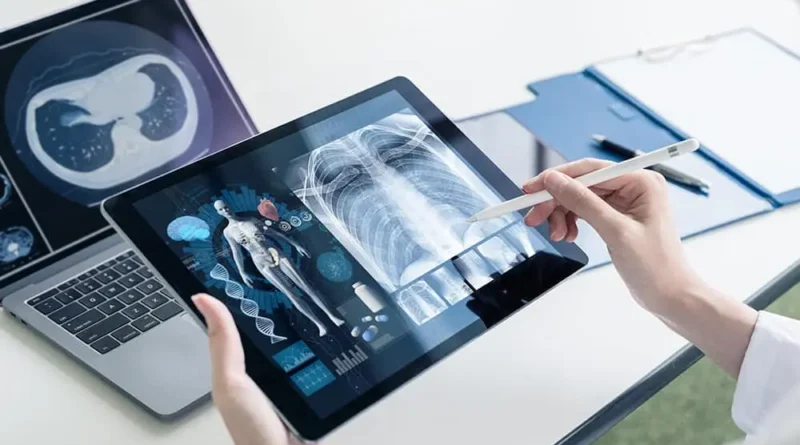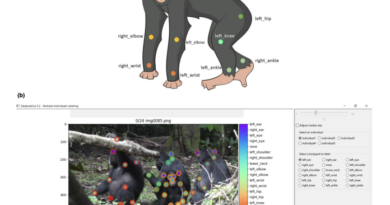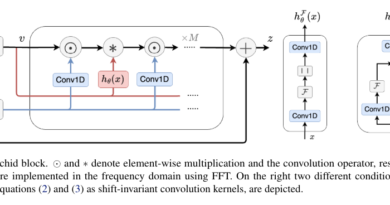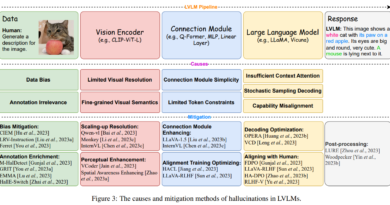How Computer Vision is Revolutionizing Electronic Health Records For Healthcare
Introduction
In today’s digital age, technology has been transforming various industries, and healthcare is no exception. One of the groundbreaking advancements in healthcare technology is computer vision. Computer vision utilizes artificial intelligence (AI) and machine learning algorithms to analyze and interpret visual data, such as medical images, to improve patient care. This article will explore how computer vision is revolutionizing electronic health records (EHRs) for healthcare, enhancing disease detection, diagnostic accuracy, and personalized treatment strategies.
Improving Disease Detection
Computer vision plays a crucial role in improving disease detection by quickly spotting patterns in medical images, and reducing human error. For instance, in the case of breast cancer, computer vision algorithms can analyze mammography images and identify potential abnormalities that may indicate the presence of cancer cells. This early detection leads to prompt intervention and improved patient outcomes.
🔥Explore 3500+ AI Tools and 2000+ GPTs at AI Toolhouse
Moreover, computer vision in healthcare enables the integration of medical images with EHRs, creating comprehensive patient profiles. By combining various medical imaging modalities, such as X-rays, MRIs, and CT scans, with patient history and laboratory results, healthcare professionals can gain a holistic view of a patient’s health status. This integration facilitates more accurate diagnosis and tailored treatment plans, resulting in improved patient care.
Automating Documentation Processes
During surgical procedures, computer vision systems can automate documentation processes, reducing errors and allowing healthcare staff to focus on patient care. Traditionally, healthcare professionals manually document surgical procedures, which can be time-consuming and prone to errors. However, with computer vision technology, real-time video feeds can be analyzed and automatically converted into detailed surgical notes. This automation saves time and improves the accuracy and completeness of medical records.
Furthermore, computer vision eliminates errors in patient identification, which can have severe consequences on healthcare. By utilizing facial recognition technology, computer vision systems can accurately match patients with their electronic health records, ensuring that the right treatment is given to the right person. This technology helps avoid potentially damaging treatment errors and legal obligations for healthcare facilities.
Creating a Safer Healthcare Environment
Computer vision technology also contributes to creating a safer healthcare environment by alerting authorities to possible accidents or safety procedure violations. For example, computer vision systems can monitor the movement of patients and healthcare staff in hospitals, detecting potential falls or deviations from safety protocols. By promptly notifying relevant personnel, these systems help reduce incident response times and mitigate risks to patient safety.
Accelerating Medical Research
In addition to improving patient care, computer vision in healthcare has the potential to accelerate medical research and development. By analyzing vast amounts of medical data, including images, clinical notes, and genetic information, computer vision algorithms can identify patterns and insights that may lead to the discovery of new treatments or diagnostic markers. This data-driven approach allows researchers to make more informed decisions, leading to more effective healthcare outcomes.
Integration of Computer Vision into EHRs: Challenges and Considerations
While the integration of computer vision technology into EHRs offers numerous benefits, it also presents challenges and considerations. One of the critical aspects to address is the privacy and security of patient data. Healthcare organizations must ensure appropriate safeguards are in place to protect patient information from unauthorized access or breaches.
Another consideration is the need for robust infrastructure and computational resources to handle the processing and analysis of large amounts of visual data. Healthcare facilities must invest in high-performance computing systems and scalable storage solutions to support computer vision applications effectively.
Moreover, adopting computer vision technology in healthcare requires appropriate training and education for healthcare professionals. It is vital to equip them with the necessary knowledge and skills to interpret and utilize the outputs generated by computer vision algorithms effectively.
Conclusion
Computer vision is revolutionizing electronic health records in healthcare by improving disease detection, automating documentation processes, creating a safer healthcare environment, and accelerating medical research. This innovative technology, powered by AI and machine learning, has the potential to enhance diagnostic accuracy, personalize treatment strategies, and improve patient outcomes. As computer vision continues to advance, its integration into EHRs will play a significant role in shaping the future of healthcare, providing more personalized, efficient, and accessible care for patients worldwide.





Your article helped me a lot, is there any more related content? Thanks!